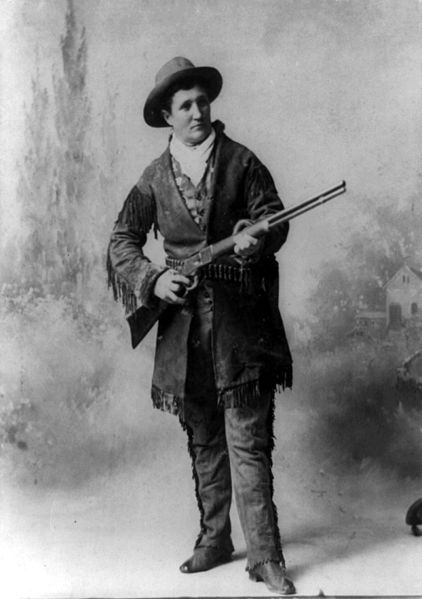One of the most storied of all American frontier legends was Martha Jane Canary, better known as “Calamity” Jane. A sharpshooter, she was a contemporary of “Wild Bill” Hickok and General George Custer. But the harsh elements can get the best of the heartiest soul, and Jane found herself on the decline as she neared her fiftieth birthday. A story about her published two years before her death in the July 12, 1901 Brooklyn Daily Eagle:
“Anaconda, Mont.–Mrs. Josephine Winfield Brake of Buffalo, N.Y., authoress and Washington correspondent for a New York newspaper, has been in Montana for the past week searching for ‘Calamity’ Jane, the noted plainswoman. Yesterday Mrs. Brake discovered ‘Calamity’ Jane in the hut of a negress at Horr, near Livingston. The poor woman was suffering with fever and was broken in spirit. The scene that followed the offer of Mrs. Brake to take ‘Calamity’ to her own home in Buffalo, where she could spend the remainder of her days in comfort, was pathetic in the extreme.
‘Calamity’ Jane has been on the frontier since she was a young girl. She was in the Black Hills at the time of the killing of ‘Wild Bill’ (William Hickok), and it was said that it was she who captured his murderer. She rendered valuable services to Custer, Reno, Egan and other Indian fighters. Of late years she has drifted about the state from place to place, making a livelihood as best she could. During the summer she sold pictures of herself to park tourists. During the past couple of years she has been ill a considerable portion of the time. The newspapers have largely printed severe articles concerning her, some of which attracted the attention of General Egan and others, who interested themselves in the woman’s plight. The result was that Mrs. Brake took steps to find Jane and the two women have now left Livingston for Buffalo.
‘Calamity’ Jane is about 50 years of age. Her maiden name was Canary and she is said to be from New York. She has been married more than once, her last husband being one Burke, a Livingston drayman.”




